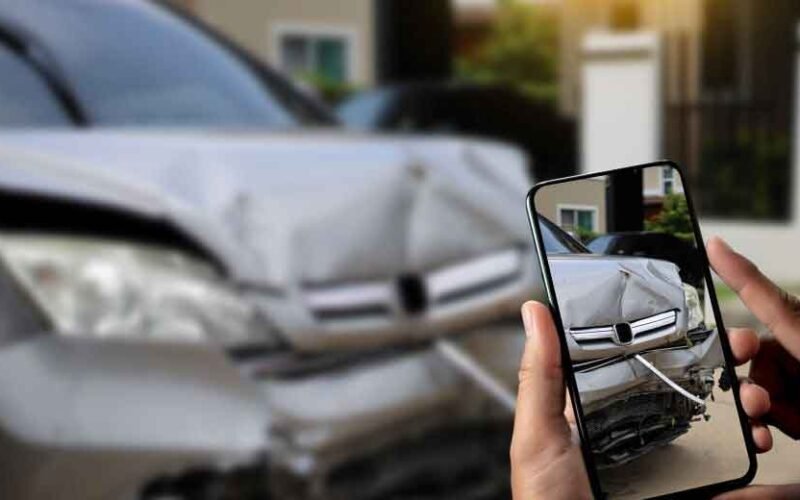When involved in an auto accident, the process of filing a claim and seeking compensation can often feel overwhelming. One of the most crucial elements in navigating this process effectively is the quality and quantity of evidence gathered surrounding the incident. Evidence plays a fundamental role in shaping how insurance companies, legal entities, and courts understand the circumstances, determine fault, and assess damages. Without solid evidence, claims may face challenges, delays, or even outright rejection, making it vital for anyone involved in an accident to understand what kinds of evidence matter most and how they influence the outcome. We will explore the critical role that evidence plays in auto accident claims, illustrating why it must be collected carefully and comprehensively to support a fair and timely resolution.
Why Evidence Matters in Auto Accident Claims
- Establishing Liability Clearly
One of the primary purposes of evidence in auto accident claims is to establish liability — that is, who was responsible for causing the accident. Liability is often the key question that determines how compensation is awarded and who will bear the financial burden of damages. According to Brach Eichler Injury Lawyers, gathering solid evidence such as photographs of the accident scene, skid marks, traffic signals, and vehicle damage is essential to reconstruct the sequence of events. For example, clear photos showing a vehicle running a red light or failing to stop at a stop sign can strongly indicate fault.
Additionally, witness statements provide an independent account of what happened, sometimes capturing details that the drivers involved may overlook or dispute. A thorough and well-documented collection of evidence can demonstrate fault, reducing uncertainty and facilitating a smoother claims process. When liability is ambiguous or contested, strong evidence can be decisive in resolving disputes and ensuring that the responsible party is held accountable.
- Supporting Injury and Damage Claims
Proving liability is only part of the story. Evidence is equally important for substantiating the extent of injuries and damages suffered as a result of the accident. Medical documentation is essential in this regard. Records from doctors, hospital visits, physical therapy sessions, and diagnostic tests provide an objective account of injuries sustained. These records also outline the treatments administered and any long-term care required, helping to quantify the physical and financial impact on the injured party.
Similarly, for property damage claims, detailed repair estimates, vehicle appraisals, and photographs of damaged property offer concrete proof of losses. Without this evidence, insurance companies may question or underestimate the severity of the injuries or the costs involved in repairs. Comprehensive documentation not only validates the claim but also supports the fair calculation of compensation, ensuring that claimants receive reimbursement that accurately reflects their true losses.
- Ensuring Compliance with Legal and Insurance Requirements
Filing an auto accident claim involves navigating both legal procedures and insurance company policies, each of which has specific requirements regarding evidence. Legal systems often require official documentation, such as police reports, to be filed within certain time frames. These reports typically include observations by law enforcement officers, preliminary fault assessments, and statements from the involved parties. For insurance companies, evidence submission guidelines vary, but they frequently require the timely provision of photos, witness information, medical bills, and repair estimates.
Missing deadlines or failing to provide adequate evidence can result in claim delays, reduced settlement offers, or even claim denial. Being aware of these requirements and maintaining organized records allows claimants to comply fully and avoid unnecessary obstacles. Additionally, proper documentation helps demonstrate good faith and cooperation, which can positively impact the handling of the claim by insurers.
- Strengthening Negotiation and Settlement Outcomes
Most auto accident claims are resolved through negotiations and settlements rather than courtroom trials. In this context, the strength of the evidence collected often directly impacts the claimant’s ability to negotiate favorable terms. When the facts are documented through photos, medical records, and credible witness statements, insurance adjusters are more likely to recognize the validity of the claim and offer fair compensation. Strong evidence reduces uncertainties and lowers the chances of disputes, which can otherwise prolong negotiations and increase stress for claimants.
Conversely, insufficient or weak evidence may cause insurance companies to question the legitimacy of the claim or the requested amount, leading to lower settlement offers or even outright refusals. By compiling thorough and persuasive evidence, claimants can approach negotiations from a position of strength, increasing the likelihood of receiving compensation that aligns with their actual damages and losses.
- Providing Protection Against Fraud and Misrepresentation
Unfortunately, the process of handling auto accident claims is sometimes complicated by fraudulent or exaggerated claims. Some individuals may attempt to misrepresent the extent of injuries or fabricate aspects of an accident to obtain undeserved compensation. Well-documented evidence acts as a vital safeguard against such misrepresentation. Clear photographs, video footage from traffic or dashboard cameras, and unbiased witness testimony provide objective information that can verify the facts and expose inconsistencies.
Medical records that detail the nature and timeline of injuries also help differentiate genuine claims from those that are exaggerated or falsified. For honest claimants, thorough evidence not only protects their interests but also helps preserve the integrity of the claims process. It fosters a fair environment where compensation is allocated justly and reduces the risk of prolonged disputes arising from fraudulent behavior.
Evidence plays a pivotal role in the successful handling of auto accident claims. It is essential for clearly establishing liability, validating injuries and damages, and complying with procedural requirements. Thorough evidence strengthens negotiating positions, guards against fraud, preserves critical details over time, and helps ensure fair compensation for all involved. Anyone navigating the complexities of an auto accident claim benefits greatly from understanding the importance of collecting and maintaining high-quality evidence. By prioritizing this aspect early on, claimants can significantly improve their chances of achieving a just and timely resolution.










